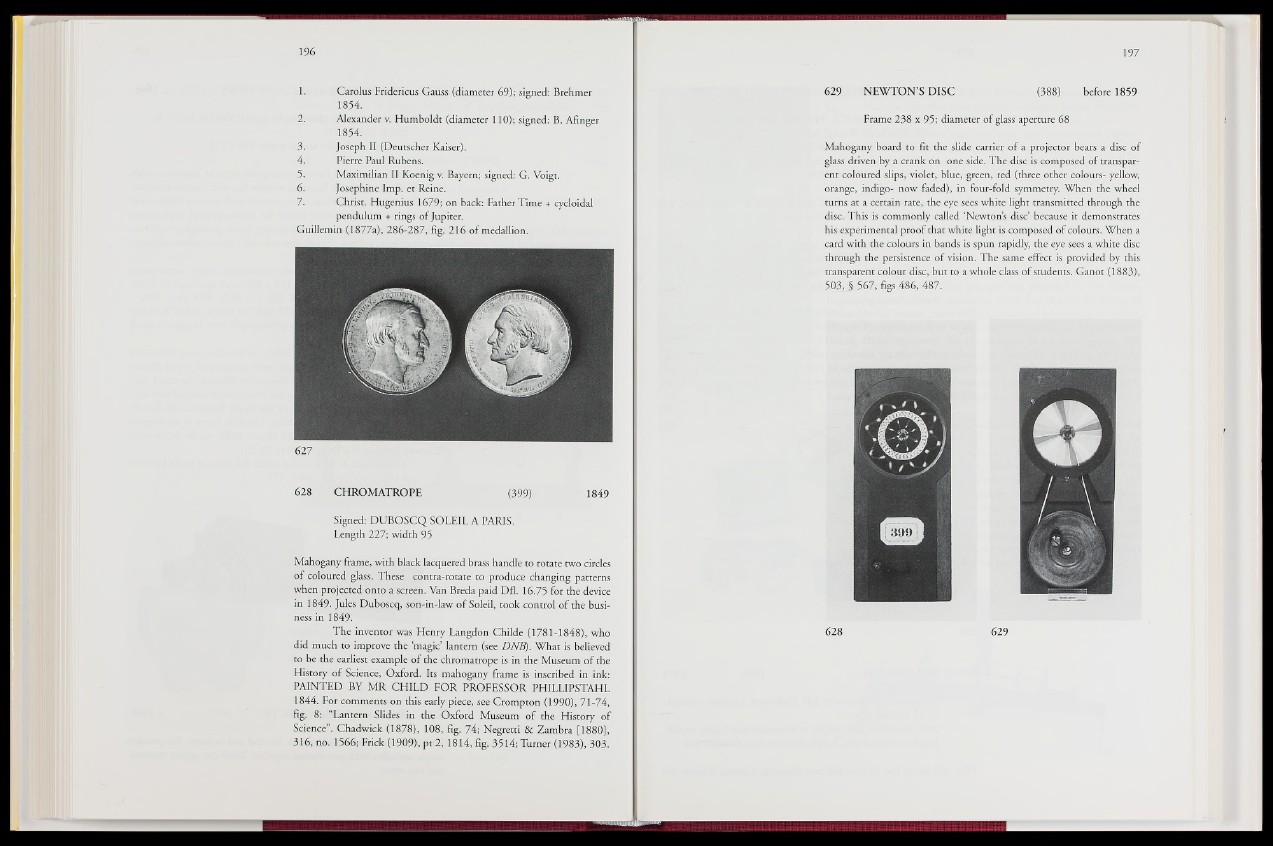
1. Carolus Fridericus Gauss (diameter 69); signed: Brehmer
1854.
2. Alexander v. Humboldt (diameter 110); signed: B. Afinger
1854.
3. Joseph II (Deutscher Kaiser).
4. Pierre Paul Rubens.
5. Maximilian II Koenig v. Bayern; signed: G. Voigt.
6 . Josephine Imp. et Reine.
7. Christ. Hugenius 1679; on back: Father Time + cycloidal
pendulum + rings of Jupiter.
Guillemin (1877a), 286-287, fig. 216 of medallion.
627
628 CHROMATROPE (399) 1849
Signed: DUBOSCQ SOLEIL A PARIS.
Length 227; width 95
Mahogany frame, with black lacquered brass handle to rotate two circles
of coloured glass. These contra-rotate to produce changing patterns
when projected onto a screen. Van Breda paid DflB6.fi for the device
in 1849. Jules Duboscq, son-in-law of Soleil, took control of the business
in 1849.
The inventor was Henry Langdon Childe {(1781-1848), who
did much to improve the ‘magic’ lantern (see DNB). What is believed
to be the earliest example of the chromatrope is in the Museum of the
History of Science, Oxford. Its mahogany frame is inscribed in ink:
PAINTED BY MR CHILD FOR PROFESSOR PHILLIPSTAHL
1844. For comments on this early piece, see Crompton (1990),B l -74,
fig. 8: “Lantern Slides in the Oxford Museum of the History of
Science”. Chadwick (1878), 108, fig. 74; Negretti & Zambra [1880],
316, no. 1566; Frick (1909), pt 2,1814, fig. 3514; Turne5l983), 303.
629 NEWTON’S DISC (388p before 1859
Frame 238 x 95; diameter of glass aperture 68
Mahogany board to fit the slide carrier of a projector bears a disc of
glass driven by a crank on one side. The disc is composed of transparent
coloured slips, violet,:blue, green, red (three other colours- yellow,
orange, indigo- now faded), in four-fold symmetry. When the wheel
turns at a certain rate, the eye sees white light transmitted through the
disc. This is commonly called ‘Newton’s disc’ because it demonstrates
his experimental proof that white light is composed of colours. When a
card with the colours in bands is spun rapidly, the eye sees a white disc
through the persistence of vision. The same effect is provided by this
transparent colour disc, but to a whole class of students. Ganot (1883),
503,8 567; figs 486; 487.
628
i
629